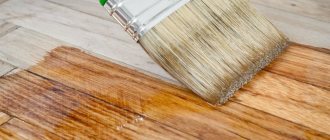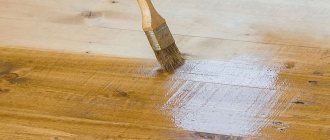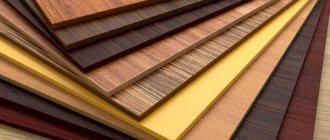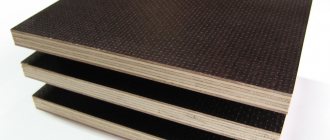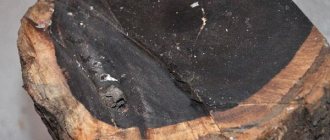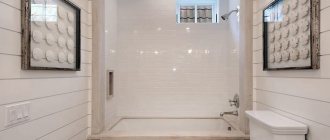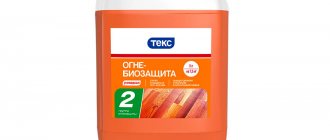In terms of their beauty and originality, wooden products are not inferior to other materials. But if unprotected, they can lose their qualities and deteriorate very quickly. You can protect wood with paint, but if the goal is to emphasize the structure of the material, then coating wooden products with varnish can solve this issue. It seems that this process is quite simple: take a brush, apply varnish and that’s it, the job is done. But not quite like that. To obtain a high-quality protected part, it is necessary to carry out a number of measures to coat the wood with varnish.
Technology of applying varnish to a wooden surface. How to varnish wood correctly?
How to apply varnish to wood?
Our company's technologists will tell you about this. It is best to call us as different products require different approaches. Frequently asked question: what is the best way to apply varnish to wood?
A spray gun is ideal for this purpose (an air gun for nitro varnishes and an airless gun for water painters), but if you don’t have one, you can use a brush or roller. Synthetic brushes are well suited for water-based products, and natural bristles for solvent-borne products.
First we prepare the surface. Hairiness and any shallow gouging defects are removed by sanding. Movements should be carried out in the direction of the fibers. It is best to use an eccentric machine for sanding. Primary processing is carried out with coarse grain 80, finishing with grinding with P 150-240 abrasive.
FAQ:
- How to varnish wood without streaks?
The varnish layer should be as thin as possible. To do this, the applied composition is poured into a paint bath, where excess varnish is removed using a rolling surface. Coloring control is carried out using a table lamp installed at the edge. The light falling on the wood will indicate where there is a lot of varnish and where there is none at all. - How many layers of varnish should be applied to wood?
Usually at least two layers are applied. Some paint schemes require three coats. Between layers it is necessary to maintain the time recommended by the manufacturer for drying. - Is it necessary to coat the wood with varnish after impregnation with primer?
If you need aesthetics, then varnish is needed. If a structure that is not visible is being processed, it is not advisable to apply a varnish composition, and a primer will provide effective protection.
Services of professional finishers
offers its services for painting and varnishing the facade of a wooden house. We have specialized in finishing timber and log houses for more than ten years. The qualified craftsmen of our company have extensive experience working with wood.
We use certified paints and varnishes from well-known manufacturers, which are of high quality and safety. We are ready to perform any amount of work, from local painting to turnkey home finishing.
You can leave your requests in any convenient way using the coordinates in the “Contacts” section.
Calculate the cost of painting and insulating your home right now
Select types of work:
Select materials:
Consumption of varnish per 1m2. Coverage schemes
The consumption of varnish per 1 m2 on wood depends on the density of the wood, the type of lumber (planed, sawn), the concentration of paintwork materials and pre-treatment. Typically, on a planed surface, consumption does not exceed 1 liter per 10 m2.
How to treat wood before varnishing so that the consumption of the latter is minimal?
To do this, use acrylic primer, which creates a film on the surface. The absorbency of lumber is reduced, and the consumption of varnish is small.
When painting with brushes, it is recommended to dilute the first layer of varnish with water so that its consistency becomes thinner. The approximate consumption rate of wood varnish per 1 m2 for the first layer is 130 ml. When applying varnish on the ground or as a second layer, the consumption can be halved.
Photo 7. Planken coated with Teknos varnish
Before priming
In order for the wood, first coated with a primer and then varnish, to look impressive and last a long time, it must be properly prepared and stocked with the necessary tools.
Tools you will need:
- a set of abrasive paper (“sandpaper”) of different grain sizes;
- small rubber plate;
- a rectangular block, the size of which depends on the surface being processed.
Having stocked up on tools, you can begin the preparatory work. All wooden surfaces are treated with sandpaper, smoothly moving it along the wood fibers. It is necessary to gradually change the grain size from coarse to finer. To process large areas (such as parquet, panels), it is more convenient to wrap a bar of the required size with abrasive paper; for smaller parts (furniture elements), it is more convenient to wrap a rubber plate.
Tip: It is most convenient to collect fine dust and wood shavings with a vacuum cleaner. After thoroughly processing and cleaning the surface, you can begin to apply the primer layer.
What is moisture-resistant varnish. Do I need to pay extra for it?
Moisture-resistant wood varnish does not allow moisture to pass through and does not release it back, as a result of which water does not accumulate under the film and does not destroy the paint layer. However, moisture-resistant varnish is more expensive, so it is advisable to use it in conditions with high humidity - a street where rain and snow have a detrimental effect on wood, a bathroom, a kitchen, a sauna. If the room is dry, there is no point in overpaying for moisture resistance.
Benefits of using wall varnish
Varnishing offers many benefits. The varnish can be used for external walls: brick, concrete.
Also for internal wall treatment, the main indicators are:
- Humidity and water, when varnishing the walls, will not be able to penetrate inside.
- Varnishing reliably protects the wall from sunlight and ultraviolet radiation. Guarantees color protection from fading.
- Extends the service life and durability of the surface and the material itself.
- The external base is reliably protected from detergents and mechanical damage.
- The wall takes on a more attractive appearance.
- You can use any detergent when cleaning.
Important: To protect walls, you need to choose the right varnish, taking into account all the nuances. It is imperative to consult with specialists.
What varnishes have a smell? Is it harmful to human health?
Paints and varnishes based on organic solvents are endowed with a pungent odor that causes headaches, nausea or allergies in humans. Such symptoms indicate pathological processes in the body. Paintwork materials with a strong odor are certainly harmful. Such products must be used for their intended purpose, in specially equipped rooms with fresh ventilation.
Odorless, water-based wood varnish is an absolutely safe product for humans. Water-soluble varnishes are very popular today. They are environmentally friendly and have excellent technical characteristics. The coating is aesthetically pleasing, lasts a long time, and does not crack under the influence of sunlight.
No. 6. Nitrocellulose varnishes
This varnish is a mixture of cellulose nitrate, organic solvent, resins and plasticizer. This is a fairly popular wood varnish for interior work. It is well suited for processing furniture and can produce a matte or glossy surface, but is not suitable for protecting floors.
The main advantages of varnish:
- high drying speed, from 20 minutes to 5 hours, average time – 1 hour;
- high polishability;
- varnish allows you to create a smooth hard coating with excellent decorative qualities;
- the composition penetrates deep into the pores of wood and provides good protection.
Among the disadvantages , it is worth noting the unpleasant odor during drying - toxic solvents evaporate, so during work it is necessary to carefully protect the respiratory tract. After drying, the varnish is absolutely safe for health. The composition does not protect wood very well from moisture and sunlight, the durability of the coating is average, so it is used for treating furniture and walls indoors .
Consumption
In order to correctly calculate how many cans of varnish will be needed to treat a certain area, you should make some calculations.
First you need to pay attention to the criteria that play an important role when spending funds:
- Wood surface. Wood with fine pores always requires less varnish than surfaces with deep pores. For example, processing beech or pine will cost much less than painting ash or oak.
- Wood sanding quality. A well-polished surface always requires little varnish. For high-quality sanding of the material, you should use sandpaper with P100 grain. To create the second layer, use P220 sandpaper.
- Viscosity. Thick varnish will have a high consumption. To reduce it slightly, the first and second layers of application can be carried out with varnish diluted with a solvent. If the product is water-based, then you can add a little water to make it more liquid.
- Method of application. If you use spraying, the consumption will be minimal. Using a brush or roller increases the product consumption significantly.
On average, varnish consumption per 1 m² is 100–125 ml. It will take less to create a second coat of varnish. So, per 1 m² you will need only 80–100 ml. But the factors described above play a decisive role, so for an accurate calculation you can purchase a can of varnish, use it and measure the area. This will allow you to make a very accurate calculation.
How to choose wall varnish
When choosing a varnish in a store, you need to clearly understand for what purposes it will be used and what characteristics the varnish has. So, if the solution is used in the bathroom for walls and ceilings, you need to understand that the main property here is moisture resistance.
If this is a children's room or bedroom, then, first of all, it should be a safe and non-toxic solution. Also take into account the criterion of what material will be varnished.
Manufacturers
Today, many well-known companies offer a wide selection of high-quality wood varnishes.
Italian products are in great demand. Borma Wachs has established itself as a high-quality and reliable manufacturer of products intended for processing natural wood.
The Italian brand Sayerlack offers more than 3,500 items, which fully satisfies the needs of woodworkers and furniture manufacturers.
The Finnish company Tikkurila is a popular manufacturer of water-based varnishes for coating parquet boards. It uses exclusively new technologies and computerized equipment to create high-quality and reliable products. The brand offers a wide range of wood varnishes that are characterized by increased wear resistance.
The Swedish company Bona has been offering high-quality water-based paints and varnishes that do not have a characteristic odor for several decades. The brand has its own research center, where innovative products are developed.
This center developed a unique varnish made from polyurethane particles Traffic . It allows you to give the coating increased wear resistance, as well as protect it from mechanical influences, as a result, Traffic varnish is used to cover parquet in high-traffic areas.
The German brand Berger offers a wide range of water-based parquet varnishes, characterized by excellent quality. Berger Aqua-Seal polyurethane varnish is in great demand, which not only has increased wear resistance, but also protects wooden parquet from chemical attack. The only exceptions are nitro solvents, since they can damage the structure.
The Italian company Vermeister is a well-known manufacturer of water-based polyurethane varnishes, which include two components and are designed to create a matte, semi-matte and semi-gloss surface. Aqua Play 2K varnish hardens in just four hours. The company offers products at reasonable prices.
No. 12. Alcohol varnish
These are not very common compositions, the scope of which is very limited. Alcohol varnishes (varnishes) are made based on ethyl alcohol and resins. The alcohol evaporates quickly, so the drying time of the varnish is minimal - from 20 minutes to an hour. The coating has a beautiful shine, but protects the surface very poorly from moisture. The composition is used in the processing of musical instruments , less often in carpentry for processing furniture .
Useful tips
To properly apply varnish to a wooden surface, you should follow simple rules:
- The surface of natural wood needs to be sanded.
- If the wood is coated with varnish or paint, then these layers must be removed. You can use sandpaper or a special remover.
- All dust must be removed after sanding.
- Prime the surface. This will avoid the formation of bubbles and other visual defects.
- Apply varnish to the wooden surface.
There are several ways to varnish a wooden surface:
- The brush is ideal for processing small parts, as well as for applying product in hard-to-reach places. To avoid streaks, you should use brushes that have “fluff” at the tips of the bristles.
- A roller is a good choice for applying varnish over large areas. When choosing a roller, you should give preference to models with a pile of no more than 5 mm.
- Spraying is a convenient way of painting using a spray gun and compressor. This option allows you not only to save varnish consumption, but also to quickly and easily treat even hard-to-reach places.
Before use, the varnish should be mixed thoroughly, especially if the product includes two components. This will have a positive effect on the durability of the coating.
If the varnish needs to be applied in several layers, then you need not only to wait for the previous layer to dry completely, but also to go over the coating with sandpaper and then remove all the dust.
The number of layers depends on what can be processed. For example, to paint furniture, two layers will be enough, but for flooring you will need to apply varnish three times.
Varieties by composition
When choosing a composition, you should take into account not only the protective and toxic qualities of the primer, but also the characteristics of the varnish that will be applied after this, at the final stage of work.
Types of primer based on base material:
- Alkyd is most liked by professional builders and is considered the best. The wood treated with it dries for up to 18 hours, a matte, dense protective film is formed on its surface, which emphasizes the structure. This primer is non-toxic. Using it, you can significantly increase the wear resistance of parquet or plank wooden floors.
- Water-dispersion and its version - acrylic - dry quickly. They are odorless and non-toxic. Wood treated with this composition is easily sanded and protected from rot and mold.
- Shellac. More often used for processing damp or poorly dried wood, it consists of methyl alcohol and the milky juice of insects. Has pronounced protective properties.
What is the difference between wood varnish for exterior and interior use?
Experts divide paint and varnish materials according to several criteria, one of which is operating conditions. Thus, products located in the open air are subject to the negative effects of natural factors, due to which the tree constantly swells and contracts. In this regard, varnishes for external use form an elastic film on the treated surfaces, which allows the wood to easily withstand regular changes in size.
At the same time, it is impossible to use compositions intended for interior work for these purposes - such materials do not have sufficient elasticity, and therefore will not be able to provide the surface with the necessary protection.
No. 11. Polyester varnish
Multicomponent composition based on polyester resins. It is applied with a special gun and requires high professionalism and sufficient precision in work. After drying, a fairly thick, durable film is formed, which protects well from moisture and aggressive substances. Varnish is used to treat floors, furniture and some musical instruments.
Reviews: advantages and disadvantages
Varnishes for exterior use have a number of advantages, the main ones being: high protective performance and the ability to preserve the unique texture of wood. High-quality compositions have increased wear resistance, resistance to ultraviolet radiation and moisture. At the same time, the varnish coating also provides the wood with protection from rotting and fire, which has an extremely positive effect on the service life of the product.
Some experts and consumers consider the disadvantages of varnish compositions to be a rather long drying time - it often takes more than 24 hours to completely dry the coating.
General information
Concept
Acrylic-based varnish is a viscous substance characterized by a homogeneous substance and a soft milky tint. The liquid contains:
- acrylic dispersion;
- antiseptic substances that protect the tree from the harmful effects of climatic and biological factors;
- plasticizers (not to be confused with these), promoting the formation of a thin and transparent layer responsible for the strength of the coating.
That is, the basis of the viscous product is aqueous dispersions of acrylic resins (non-pigmented) of high quality with the addition of refining components.
Advantages
Acrylic varnish is a relatively new product, but it has already acquired an army of fans. What's good about him?
Its advantages:
- safety;
- long service life;
- environmental friendliness;
- practicality;
- functionality;
- aesthetics;
- ergonomics;
- elasticity;
- strength;
- high adhesion;
- no odor;
- lightning-fast drying;
- resistance to the harmful effects of biological factors;
- resistance to the harmful effects of climatic factors;
- resistance to the negative influence of thermal factors;
- resistance to the destructive influence of mechanical factors;
- availability;
- efficiency;
- ease of care;
- ease of application.
The product not only reliably protects wood surfaces, but also favorably emphasizes their natural beauty, giving a dazzling shine.
Flaws
Our hero, of course, also has negative aspects. There are few of them, but they exist. So, the substance is known for the following disadvantages:
- capriciousness when applied - does not tolerate drafts, sunlight, requires a temperature regime - not lower than +5°C and not higher than +30°C;
- picky in storage - does not like low temperatures, which make it unsuitable for use.
When working with varnish, you must follow the manufacturer's recommendations so as not to spoil the substance, and most importantly, the wood surface.
We sorted out the advantages and disadvantages. Hmm, it’s not clear to me, is acrylic varnish intended only for interior work? I wonder if it is possible to apply the substance, for example, to objects located in the yard, that is, on the street? Well, well, let's find out.
Where to buy wood varnish?
In Moscow
In Moscow, you can purchase varnish for exterior woodwork from companies such as:
- “Paints on the Sofa”: website: https://kraskinadivane.ru;
- address: Moscow, Taldomskaya street, building 17, building 1;
- telephone.
- website: https://stroycolorit.ru;
- website: https://www.krasko.ru;
In St. Petersburg
In St. Petersburg, the following organizations sell wood varnishes:
- “Petrovich”: website: https://petrovich.ru;
- address: St. Petersburg, 6th Verkhny lane, building 12A;
- telephone.
- website: https://olvia-color.ru;
- website: https://vlagoshchit.rf;
Thus, a properly selected varnish for exterior use can not only reliably protect wood from the harmful effects of external factors, but also preserve its natural texture almost unchanged.
In the next video you will find a review of Kudo KU-904x tinting varnish for wood.
Review of the best acrylic varnish manufacturers
Have you come to the market or construction supermarket? Is your head spinning from the abundance of the right product? Yeah. There are tons of producers of the substance! Therefore, I decided to make your task a little easier.
I am pleased to present the TOP 5 best manufacturers:
- "Tikkurila";
- "Pinotex";
- "Eurotex" (aqualak);
- "Lakra";
- "Tex."
Now let's see what's good about their products.
Aqualak Eurotex
Purpose:
- protection of wood from uninvited guests - microorganisms, rodents, insects;
- protection of wood from precipitation and temperature changes.
Application: new and old wooden surfaces, fiberboard; plywood; chipboard;
The varnish is used for both interior and exterior work.
Packaging: 0.9 kg; 2.5 kg; 9 kg.
Consumption:
- 1 kg per 4–8 squares of rough surface;
- 1 kg per 15–20 square meters of smooth surface.
Price: 0.9 kg – $3.8; 2.5 kg – $9.2; 9 kg – $31.
Consumer reviews are extremely positive.
"Lakra"
Purpose – reliable protection of wood surfaces from the negative influence of climatic, mechanical, biological factors and giving them shine.
Application – intended for interior and exterior work.
Packaging: 0.9 kg; 2.5 kg; 10 kg.
Consumption:
- 1 kg per 5–8 m2 rough;
- 1 kg per 10–14 m2 of smooth surface.
Price: 0.9 kg – $2; 2.5 kg – $5.3; 10 kg – 20$.
Lakra is cheaper than Eurotex aqualak, but the quality is also at the highest level.
"Pinotex"
Purpose – intended for decoration and protection of wood objects.
Application: windows; doors; walls; skirting boards; wooden utensils; furniture.
Packing: 1 kg; 3 kg; 10 kg.
Consumption:
- 1 kg per 8–10 m2 of rough surface;
- 1 kg per 15–18 m2 smooth.
Price: 1kg – $2.6; 3kg – $6.9; 10 kg – $21.6.
Acrylic varnish from this manufacturer is the safest.
"Tex"
Purpose – performs protective and decorative functions.
Application – universal composition. Therefore, it is intended for application to any wood surface, both outdoors and indoors.
Packaging: 0.9 kg; 2.7 kg; 9 kg.
Consumption:
- 1 kg per 8–12 m2 rough;
- 1 kg per 14–18 m2 of smooth surface.
Price: 0.9 kg – $2.1; 2.7 kg – $6.2; 9 kg – $20.
Acrylic varnish from this manufacturer is incredibly resistant to the harmful effects of negative environmental factors.
